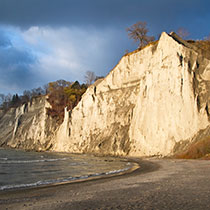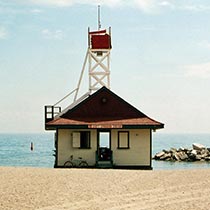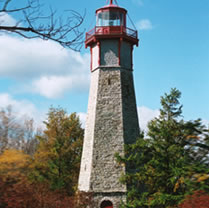On October 15, 1954, Hurricane Hazel collided head on with the Toronto shore, and unleashed torrential rains that increased in intensity as the night progressed, sweeping boats, houses and corpses out into the Lake. When it was all over, more than eighty people were dead in Southern Ontario, the vast majority of whom were from Toronto and vicinity.
While the Lakeshore was the hardest hit waterfront district, suffering major property damage and loss of life, the Island passed through the hurricane relatively unscathed.
A different story, however, unfolded out in the harbour, where long time Islander Jimmy Jones (“Jr.”), who was operating a water taxi from John Durnan’s boathouse, experienced lashing rain and crashing waves the likes of which he has never seen again.In the early evening of October 15, Jimmy Jones, oblivious to the seriousness of the situation, left the protected Island Lagoon and headed into the Bay for the city with one passenger, Jack Gale, a reporter for the Toronto Star. They were in the Minnie D, a steady wooden round-bottomed vessel.
As Jones approached the open water, he was surprisingly faced with increasingly high easterly waves, waves that drove the boat into deep troughs where it shuddered, as if breaking apart. Jones let up on the throttle and gave the boat her way, and as Gale thrashed around on the bench seats, at times clinging on to the deck-head for dear life, they ploughed forward toward Toronto. When they reached the foot of York and Queen’s Quay, street signs on cement poles were being tossed around in the roadway. With ferry service from the mainland cancelled around 7 pm., a group of increasingly numerous and worried Islanders started to gather, unsure of whether to run for cover or beg Jimmy to just take them home. Says Jones of the experience:
They all just stood there, waiting to see what I would do, if I would take the chance and head back home. The Minnie D could carry twenty-three passengers and she was our most solid vessel, but I’d never seen anything like this before. At midnight I filled her to capacity, and with the rain coming down in sheets on Queen’s Quay, I decided make a run for it. I knew that going back would be easier because the winds were out of the east, so I just pointed her towards Hanlan’s and let the wind push me . . . We boiled into Hanlan’s and I thanked my lucky stars.
When asked if he would do it again, his answer is definitive, “I don’t think so. I was twenty-four years old in 1954.” Twenty years later, memories of the crossing had not faded. Jones found himself at an Island social gathering with John Fowlie, a passenger on the return trip, who, when asked if he had gone over to the Island during the hurricane, pointed directly at Jones and stated, “Yes I did. I came with that bastard over there.” . . .
While Hazel was by no means the worst storm the Island had ever seen, the aftermath of the hurricane would be felt in the years to come. As Sally Gibson notes in More Than an Island, Hazel became part of the official rationale for Metro’s drive to convert the entire space to parkland in the years that followed.



![R6lrg[1]](http://janefairburn.com/wp-content/uploads/2012/07/R6lrg11.jpg)




